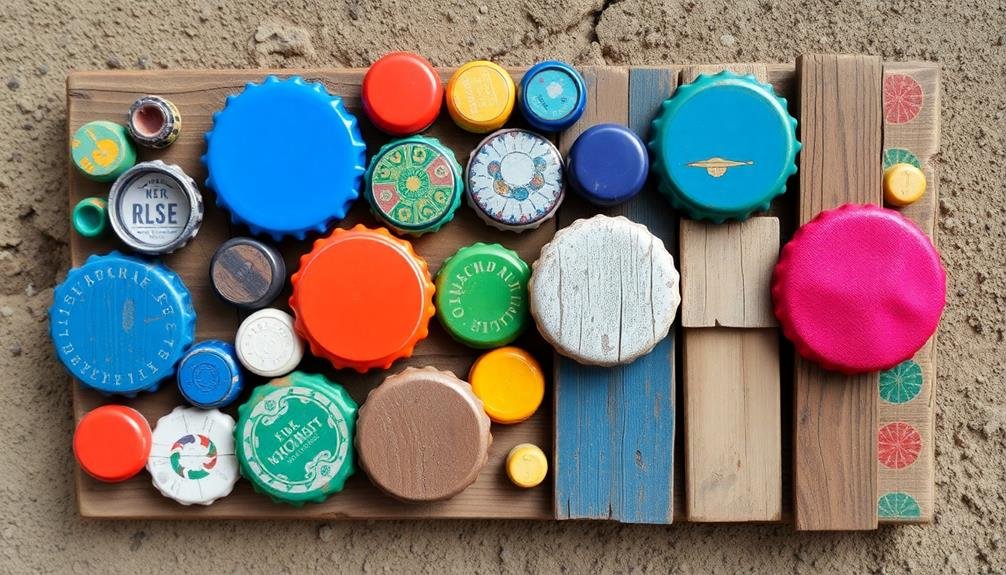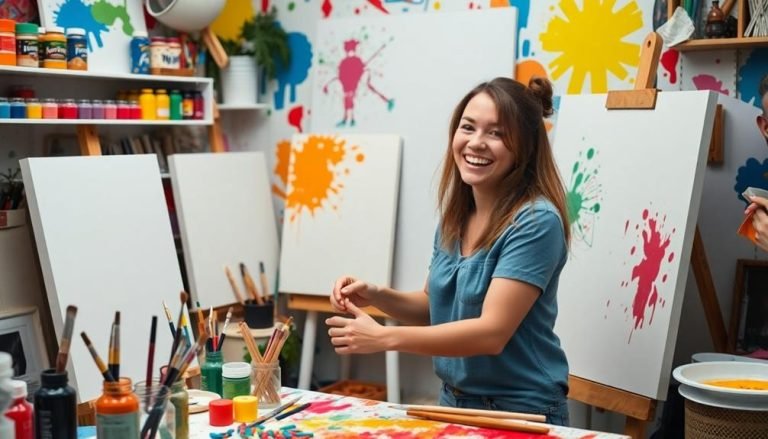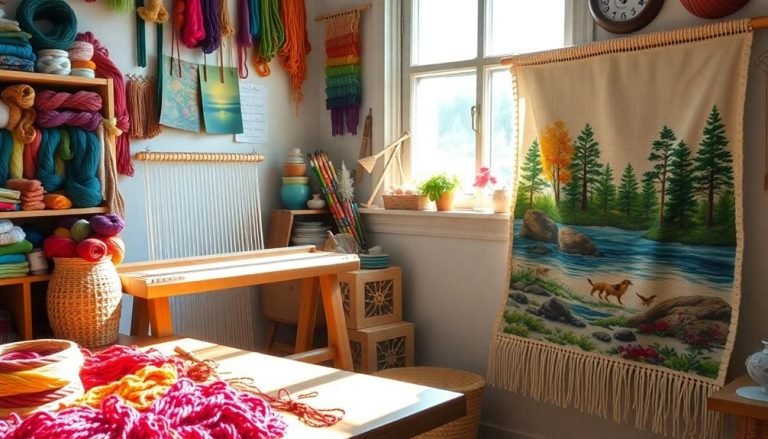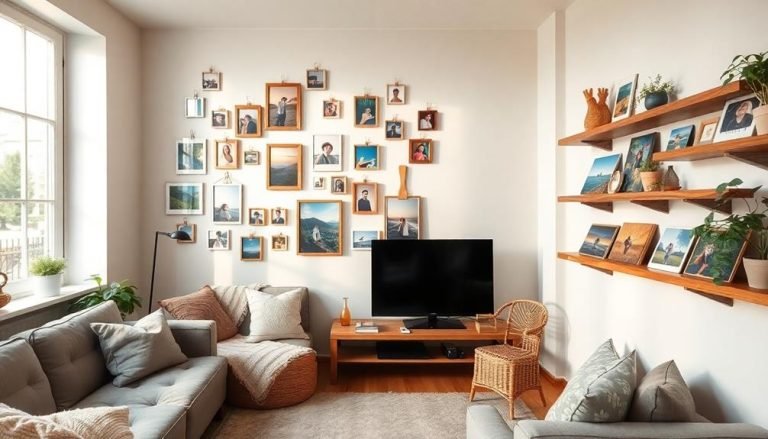You might think that creating art from recycled materials is too challenging, but it's actually a rewarding process that anyone can embrace. By using items you already have, you not only save money but also contribute to a more sustainable lifestyle. Imagine transforming a stack of old magazines or leftover fabric into a stunning piece for your wall. What techniques can you use to make these materials shine? Exploring simple DIY projects could lead you to discover your hidden talent while enhancing your home's aesthetic.
Key Elements
- Use old magazines, fabrics, and reclaimed wood to create unique and vibrant wall art that reduces waste.
- Transform everyday items like glass bottles into eye-catching decorative pieces for your walls.
- Engage with local thrift stores and community events to source recycled materials for your art projects.
- Create a gallery wall by grouping various pieces to tell a cohesive story while promoting sustainability.
- Highlight your artwork with strategic lighting and incorporate plants to enhance visual appeal and depth.
Benefits of Using Recycled Materials
Using recycled materials for wall art brings a host of benefits that not only enhance your decor but also contribute to a healthier planet. By choosing to repurpose items like old newspapers, fabric scraps, or discarded wood, you're not only reducing waste but also infusing your space with unique character and a personal touch.
Each piece tells a story, allowing you to express your creativity while fostering a sense of belonging within your community, as you align with others who value sustainability.
Moreover, utilizing recycled materials can be a cost-effective choice, as many of these items are often readily available or inexpensive. This accessibility enables you to experiment with various designs and styles, making it easier to create art that resonates with your personal aesthetics and the atmosphere of your home.
Additionally, embracing eco-friendly art contributes to a broader movement towards sustainability, encouraging others to reflect on their environmental impact.
When you display these creations, you spark conversations about resourcefulness and environmental responsibility, fostering connections with those who share similar values. In this way, your wall art becomes not just decor, but a meaningful expression of a collective commitment to a more sustainable world.
Creative Ideas for Wall Art
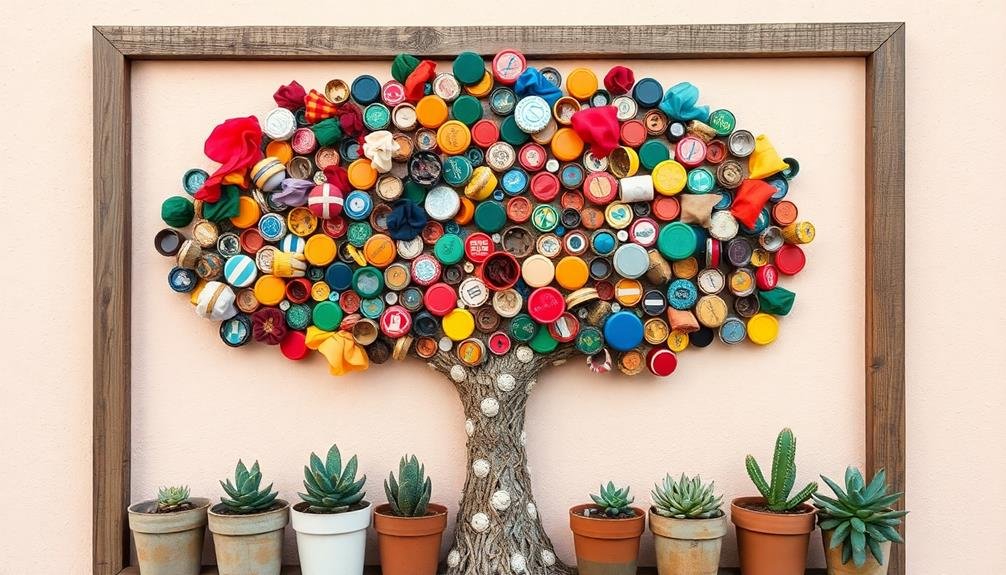
When it comes to creating stunning wall art, the possibilities are endless and can be as diverse as your imagination allows. You could start by repurposing old magazines, cutting out vibrant images and phrases that resonate with you, and arranging them into a cohesive collage that reflects your personality.
Additionally, consider using upcycling old fabrics to create unique decor pieces that can enhance your wall art. Alternatively, consider using reclaimed wood to craft geometric shapes or even intricate designs, adding a rustic charm that can evoke a sense of warmth and connection to nature.
Another creative option is to transform glass bottles into unique wall hangings; by painting them in various colors and arranging them in a visually appealing pattern, you can create a fascinating display that serves as both art and conversation starter.
If you have fabric scraps lying around, why not sew them into a patchwork tapestry? This not only showcases your creativity but also provides a tactile element to your space.
Lastly, think about incorporating plant life into your wall art. Hanging planters made from recycled materials can infuse your environment with greenery, enhancing the aesthetic while promoting a sense of tranquility.
Each piece you create won't only beautify your walls but also foster a deeper sense of belonging and connection to your environment.
Step-by-Step DIY Projects
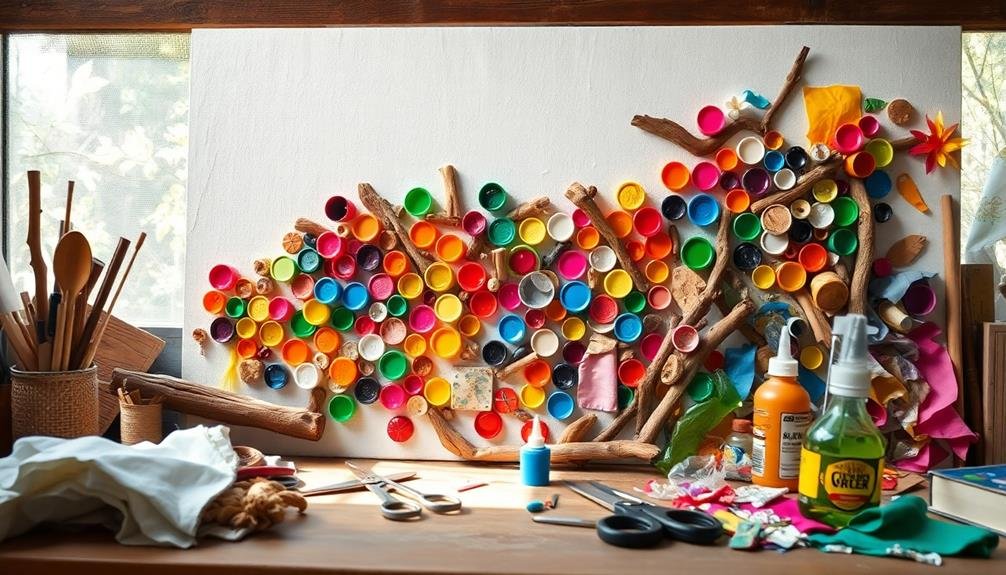
Creating eco-friendly wall art can be a rewarding experience that not only beautifies your space but also contributes to sustainability. To get started, gather materials like old magazines, cardboard, or fabric scraps. Here's a simple guide to help you through the process:
| Step | Action |
|---|---|
| Step 1 | Choose your base, like a canvas or piece of cardboard. |
| Step 2 | Cut out shapes or images from your recycled materials. |
| Step 3 | Arrange and glue your pieces onto the base to create a cohesive design. |
Once the glue dries, you might want to add a layer of clear varnish to protect your artwork. Consider hanging your creation in a common area to spark conversations and make a statement about sustainability. This project not only allows you to express your creativity but also invites others to appreciate the importance of reusing materials. As you display your art, you'll foster a sense of belonging within your community, encouraging others to explore their own artistic endeavors while being environmentally conscious. Enjoy the process, and remember that every piece you create contributes to a greener future.
Tips for Sourcing Recycled Goods
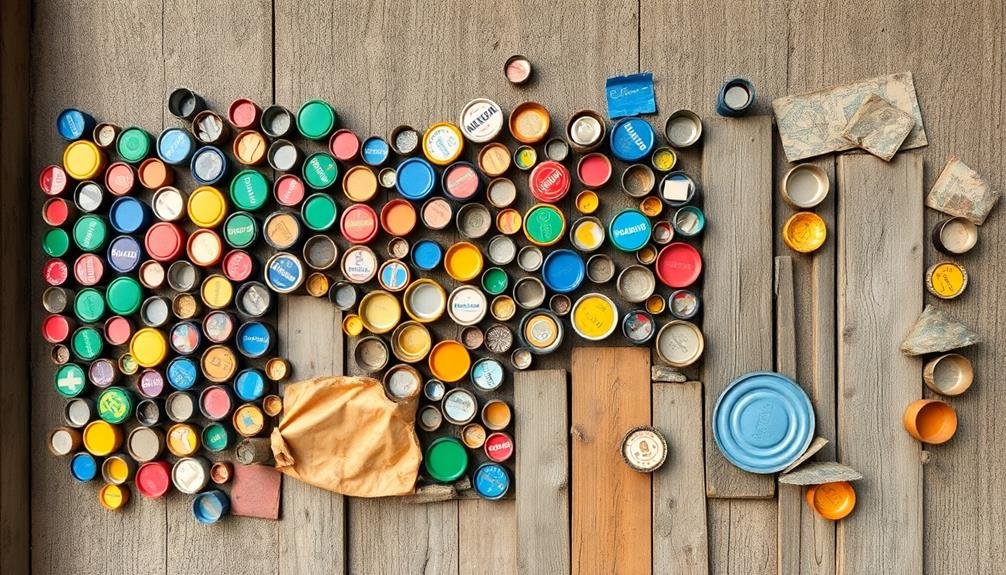
Sourcing recycled goods can be an exciting treasure hunt that enhances your eco-friendly wall art projects. Start by exploring local thrift stores and flea markets, where you're likely to find an array of items like old frames, fabric scraps, and unique trinkets.
These places often hold hidden gems that can add character to your creations, so don't rush—take your time to sift through the selection.
Additionally, consider reaching out to friends and family for unused items cluttering their homes. You'd be surprised at the treasures people are willing to part with, from worn-out furniture to leftover craft materials.
Online platforms such as Freecycle, Craigslist, or Facebook Marketplace can also yield valuable finds, as people frequently give away items in good condition.
Lastly, keep an eye on community events like swap meets or recycling drives, where you can find supplies and connect with like-minded individuals who share your passion for sustainability.
Showcasing Your Finished Art
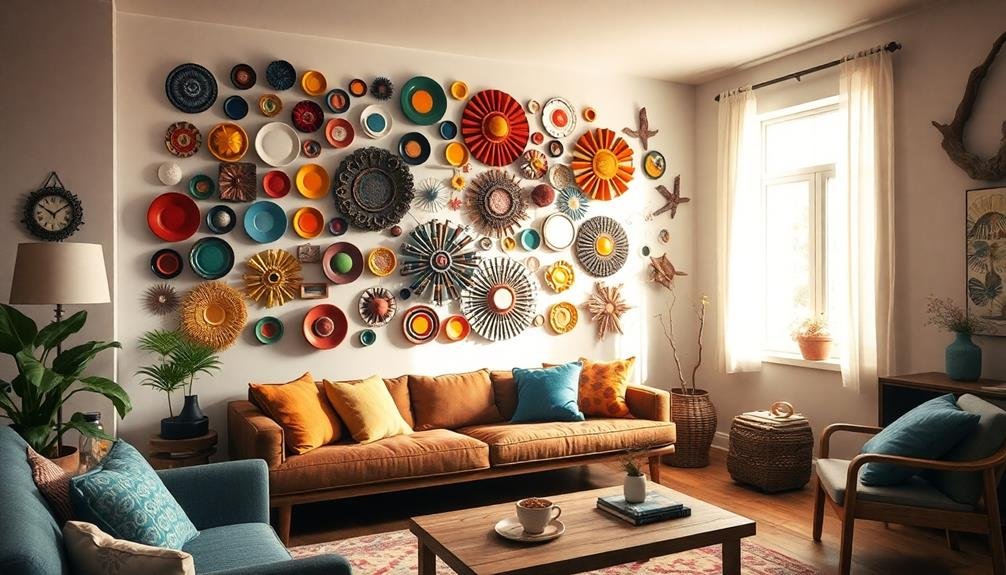
Your completed eco-friendly wall art deserves to be displayed with pride, transforming your space into a vibrant reflection of your creativity and commitment to sustainability.
Begin by choosing the perfect location; a well-lit wall can enhance the colors and textures of your artwork, making it a focal point in any room. Consider grouping multiple pieces together to create a gallery wall, allowing your art to tell a cohesive story that resonates with your values and experiences.
To further personalize your display, use reclaimed materials for frames or mounts, echoing the essence of your creations while reinforcing your sustainable ethos.
Don't hesitate to incorporate other decorative elements—such as plants or upcycled sculptures—that complement your artwork and add depth to your overall aesthetic.
Additionally, lighting plays a vital role in showcasing your art; strategically placed lights can highlight certain features, drawing attention to the intricate details of your work.
Remember, each piece not only speaks to your artistic vision but also invites conversation, creating a sense of belonging among friends and family who appreciate your dedication to eco-friendly practices.
Frequently Asked Questions
What Types of Recycled Materials Work Best for Wall Art?
You'll find that paper, old fabrics, and discarded wood work wonders for wall art. Think creatively! By using items you already have, you can make unique pieces that reflect your style and passion.
Can I Use Non-Recyclable Items in My Art?
You can definitely use non-recyclable items in your art! They can add unique textures and visual interest. Just be mindful of how they impact the environment, and consider balancing them with more sustainable materials.
How Do I Clean Recycled Materials Before Use?
Cleaning recycled materials can be a crafty challenge. Start by scrubbing surfaces with soap and warm water, then rinse thoroughly. Let them dry completely; you'll guarantee your art's beautiful and bacteria-free, ready for creativity!
Are There Any Safety Concerns With Using Recycled Goods?
Yes, there can be safety concerns with recycled goods. You should check for harmful substances, sharp edges, or potential allergens. Always verify materials are clean and safe before using them in your projects for peace of mind.
How Can I Inspire Others to Create Eco-Friendly Art?
Share your passion for planet-friendly projects! Showcase stunning pieces, spark conversations, and spread the joy of creativity. When you inspire others, you're building a beautiful community that values vision, vibrancy, and environmental responsibility together.
Whats Next
By embracing eco-friendly wall art crafted from recycled materials, you not only contribute to environmental sustainability but also engage in a creative process that enhances your living space. As you transform everyday items like old magazines and reclaimed wood into unique art pieces, you foster a deeper connection to both your home and the planet. So, gather your materials, let your imagination flow, and relish the unexpected beauty that arises when discarded goods find new purpose, enriching your surroundings.

